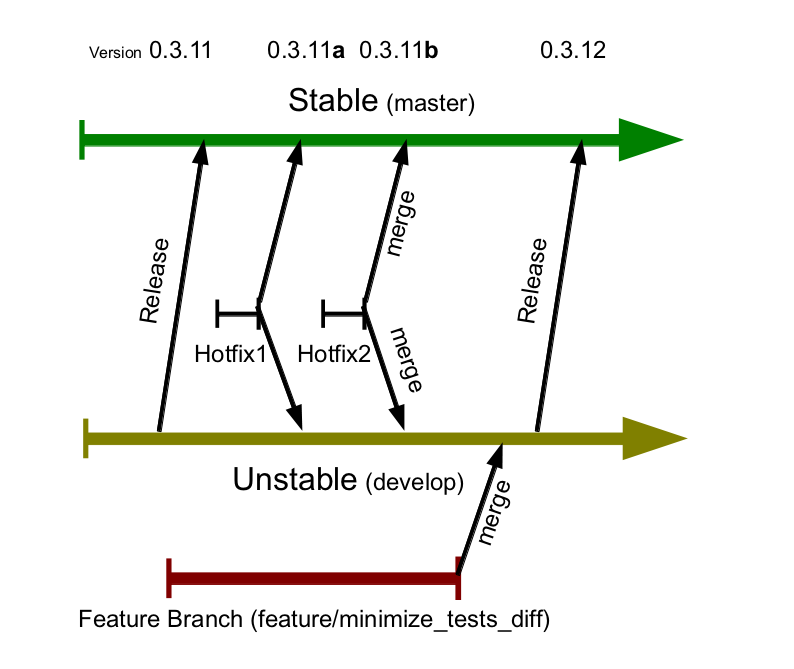01 October 2011
Nuitka git-flow
Hello there,
this is to let you know that I have switched Nuitka to the “git flow” development model. That means, now there is a supported stable version, and a develop branch, together with feature branches. Git flow example for Nuitka release 0.3.12 Note In case, you want and can improve the source (link since removed) visually or otherwise, please go ahead. I am using it for a presentation next week too, and would be glad if you could make it more pretty. My artistic skills are not the same as my programmer skills. :-) So there is now always at least these 2 branches: Stable (master branch) Unstable (develop branch) and then there may be feature branches, like this one currently: Feature branch minimize_CPython26_tests_diff These will only have certain life, until they are completed, then they are merge into “develop” and become part of the next release. This may or may not happen, depending on how things go. Hotfixes, typically bug fixes, can be made simultaneously on stable and develop branch. The git-flow package takes care of the merging to both. Because that’s so easy now, a stable version can be provided and supported for a longer time. Features can be published while under development. My idea is that feature branches should basically work, but the bar will be lower. People can have a look at them, or start their own and make me integrate them. For example, in the new feature branch, a couple of boring things are happening. Support for frame stack will reduce the diff, as will some work to match CPython’s choices for exception line numbers. Completing will take a while, but should not block a release. So this is best done in the feature branch, esp. as nothing is going to really depend on it. As you can see from this diagram, I am working mostly on documentation things. The new and improved README on develop, which is closer to a User Manual in PDF form, and other organization things, may get a release before the PyCon DE next week. The README also describes this process. Hope is that with this approach, I will improve transparency (you can see earlier what i am working on, because there is now a place where things may break (develop) or may not yet be integrated or completed fully (feature branches) and yet be public. The overhead appears to minimal thanks to “git-flow”. Developing hotfixes is actually easier, when done on the stable branch, because problems cannot originate from the current development work that may or may not be all that perfect yet.Example

Benefits of the new model
Uses of Feature Branch
General Picture